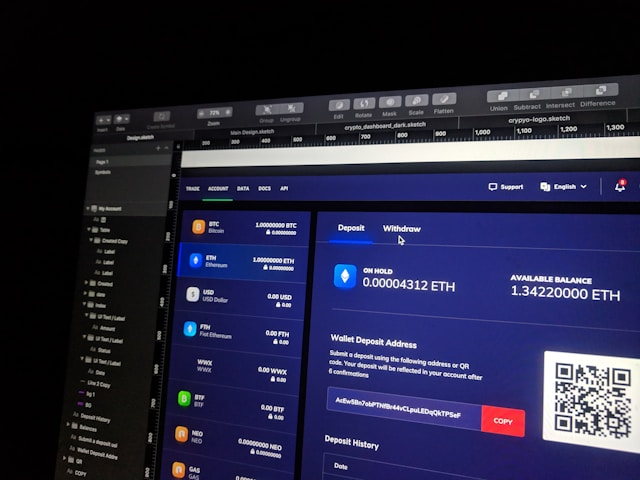Exchange-Traded Funds (ETFs) have become a popular investment choice for many, and it’s easy to see why. They offer a simple way to diversify, often at a lower cost than other options. Unlike individual stocks, ETFs bundle multiple assets into one package, letting you spread your risk without having to pick each stock or bond separately. But how can you make the most of ETFs? Let’s look at some strategies that have worked for real investors. Looking for real-world examples of successful ETF strategies? Bitcoin Bank Breaker links investors with firms that reveal proven approaches without making direct recommendations.
Strategy 1: The Classic S&P 500 ETF Approach
One of the most straightforward ways to invest in ETFs is to track a broad market index. The S&P 500 ETF is a perfect example. This strategy aims to mimic the performance of the S&P 500, which represents 500 of the largest companies in the U.S. Investing here means you are betting on the overall health of these major companies. It’s a bit like saying, “I believe in the U.S. economy.”
A real-world success story comes from Warren Buffett, who has long advocated for low-cost index funds like the S&P 500 ETF. He once famously wagered that a simple S&P 500 index fund would outperform a group of actively managed hedge funds over ten years. He won the bet, proving that sometimes sticking with the basics can be the smartest move. This approach is best for those who believe in long-term growth and can stomach short-term dips.
If you’re considering this strategy, remember to do your research and consult with a financial expert. They can help you determine if this aligns with your goals, time frame, and risk tolerance.
Strategy 2: Sector-Specific ETFs for Targeted Growth
While broad market ETFs give you a piece of the whole pie, sector-specific ETFs let you zero in on one slice. Whether it’s technology, healthcare, or energy, you can invest in a particular industry you believe will grow. This approach allows you to benefit from trends without having to pick individual winners.
For example, during the pandemic, technology and healthcare sectors saw massive growth. Those who had invested in sector-specific ETFs like the Technology Select Sector SPDR Fund (XLK) or the Health Care Select Sector SPDR Fund (XLV) enjoyed solid returns. Even now, as technology continues to evolve and healthcare remains a constant necessity, these sectors can still be good bets for future growth.
However, sector-specific ETFs carry more risk than broad ones. If that sector struggles, your investment can take a hit. So, if you want to try this strategy, make sure it’s a sector you believe in, and don’t hesitate to ask a financial advisor for insights. Their expertise can guide you on when to enter and exit these investments.
Strategy 3: Dividend ETFs for Steady Income
If you’re the kind of person who prefers a steady stream of income, dividend ETFs might be right up your alley. These ETFs focus on companies known for paying consistent dividends. While growth-focused investors might chase the next big thing, dividend investors look for stability and regular payouts.
A popular choice here is the Vanguard High Dividend Yield ETF (VYM), which targets companies with high dividend yields. Investing in dividend ETFs is similar to owning a rental property. Instead of waiting for your property value to increase, you earn money through regular rental payments. The goal isn’t to see the price skyrocket but to receive steady income over time.
For those close to retirement or who prefer more predictability, dividend ETFs can be a smart choice. They might not offer the high returns of tech stocks, but they can provide peace of mind. Just make sure to assess the yield, the sustainability of those dividends, and the underlying companies’ health. It’s wise to talk to a financial expert to understand how dividends can fit into your overall plan.
Strategy 4: International ETFs for Global Exposure
Why limit yourself to the U.S. market when there’s a whole world of investment opportunities out there? International ETFs let you invest in companies across the globe, spreading your risk beyond just one country. If the U.S. market struggles but European or Asian markets thrive, your portfolio can still benefit.
A real-world example is the iShares MSCI Emerging Markets ETF (EEM), which gives exposure to companies in developing countries like China, India, and Brazil. These economies have been growing faster than developed markets, offering potential for high returns. Of course, there’s more risk too—political issues, currency fluctuations, and economic instability can impact returns.
Before diving into international ETFs, consider the factors that might affect these markets. Currency risks and geopolitical tensions are just a couple of the things you need to think about. Speaking with an expert can help you navigate these waters and decide how much of your portfolio should be global.
Conclusion
Investing is not just about picking the right ETF; it’s about understanding why you’re investing and how these choices align with your financial goals. Take your time, research thoroughly, and don’t be afraid to ask for advice. With the right approach, you can make ETFs a rewarding part of your investment strategy.
Photo by Eftakher Alam on Unsplash (Free for commercial use)
Image published on May 28, 2019




